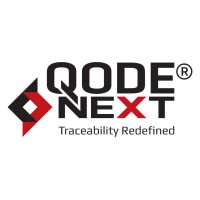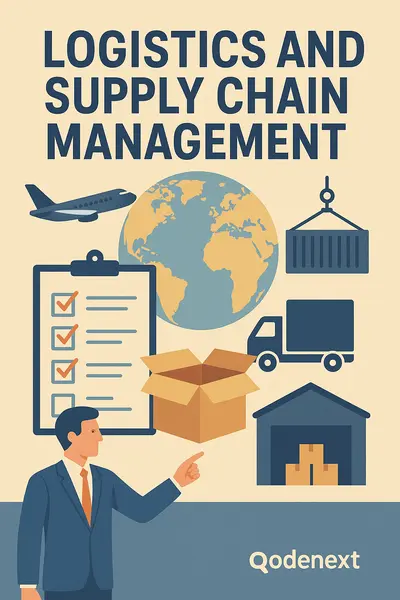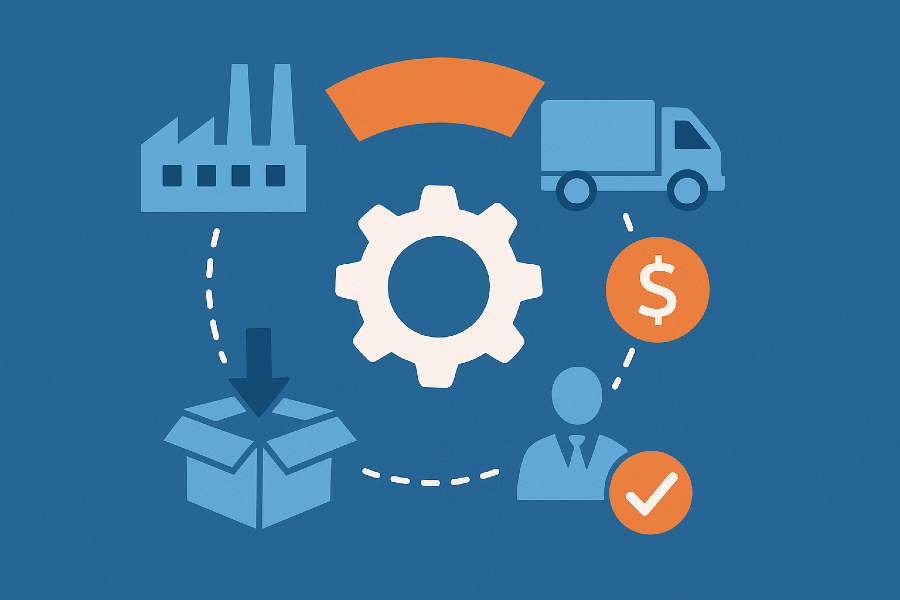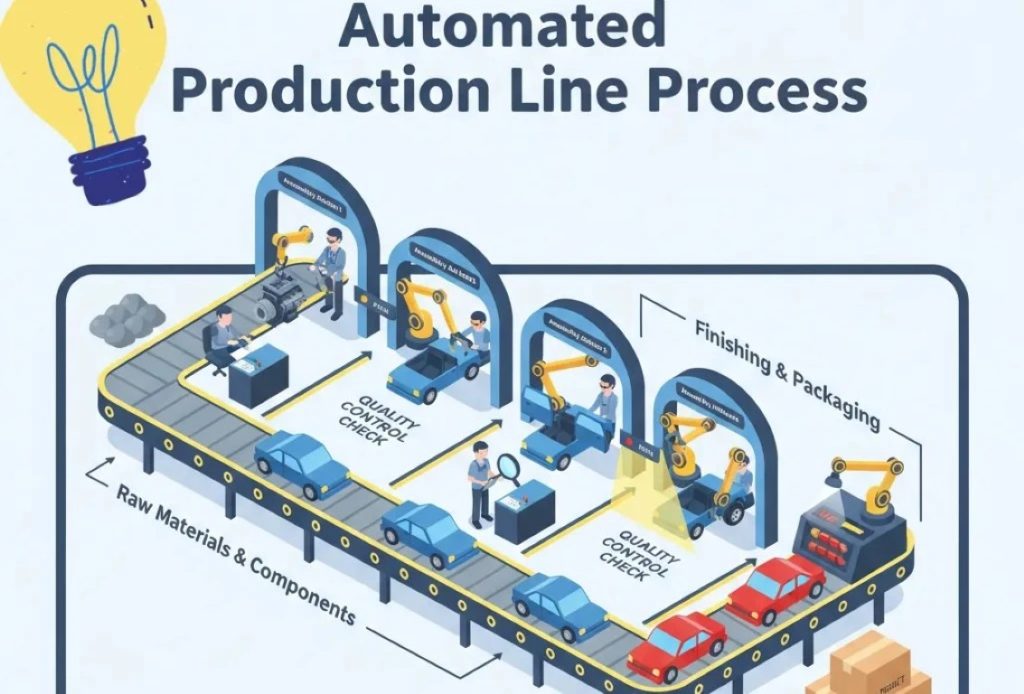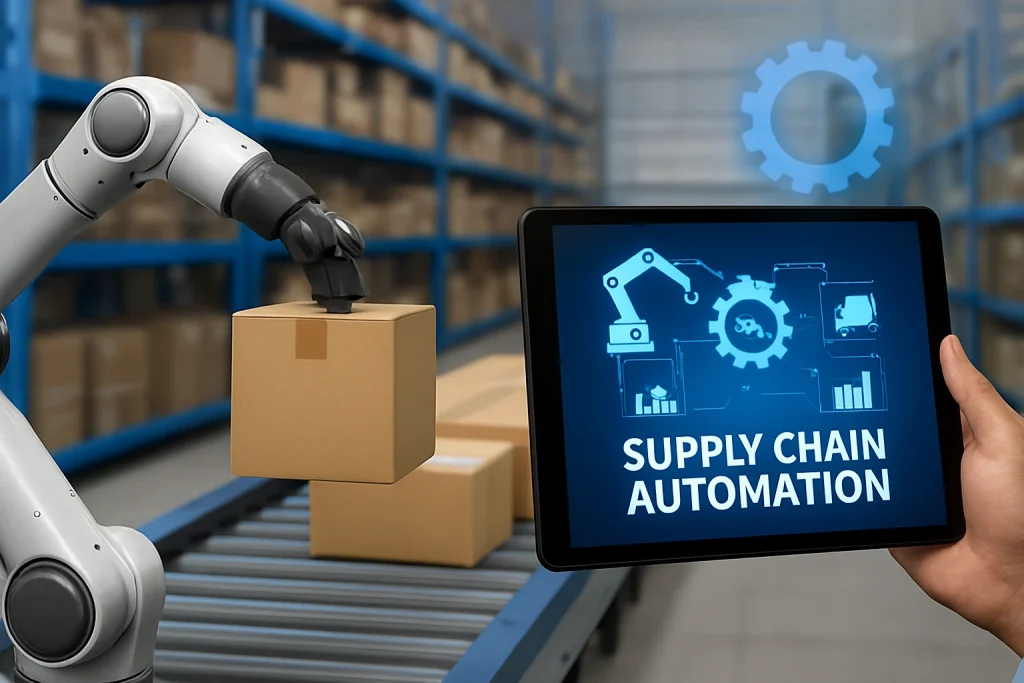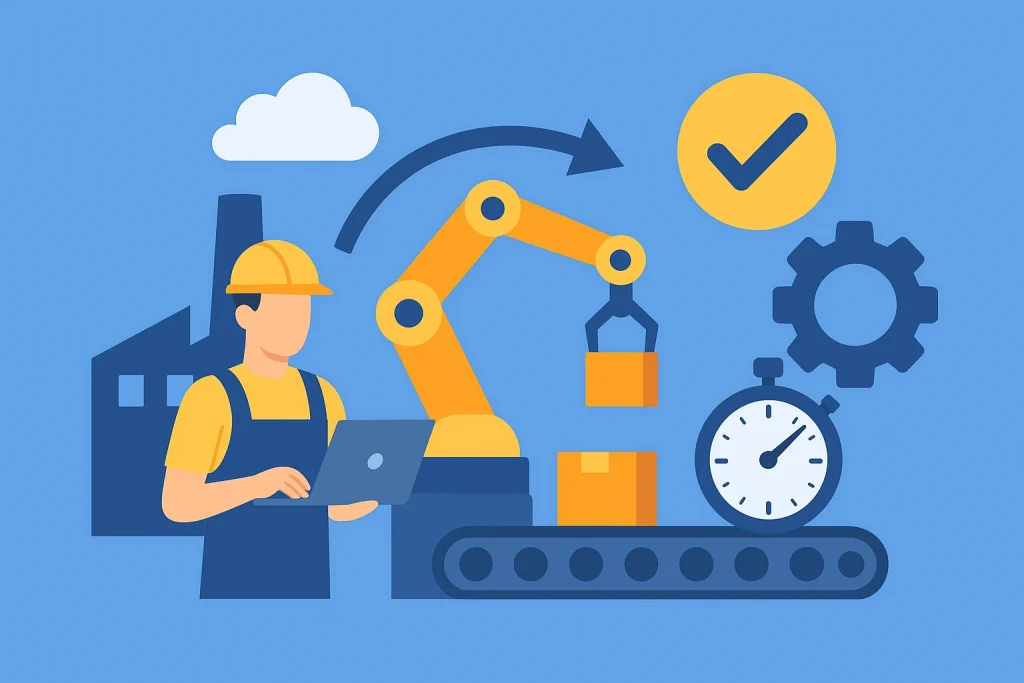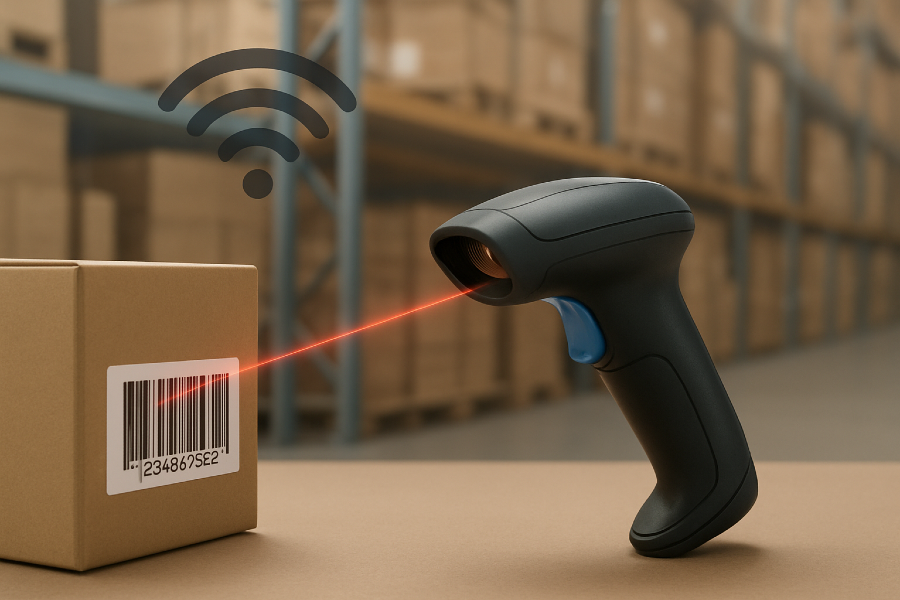
Efficiency is all in the present day business world that is busy. The rf scanner has become a game changer capable of changing how businesses operate, maintain inventory and trace assets. It is no longer a luxury, but it is becoming a need by this wireless technology in businesses that aspire to remain competitive.
What is an RF Scanner?
An rf scanner is a wireless data collection device that has a combination of barcode scanning with radio frequency communication. They provide mobility and flexibility as opposed to the traditional wired scanners since workers move freely across warehouses, retail floors or manufacturing sites and still stay connected in real-time to the central systems.
These scanners are radio frequency gadgets that transfer scanned information immediately to a host computer or network. This does away with the need of physical connections and facilitates smooth data flow among operations.
How RF Scanners Work
This scanner has a very elementary but powerful principle. On scanning the barcode the device reads the information and sends it wirelessly to a base station or access point. This data is then sent to your inventory management system or database and then done in real time.
It is a wireless architecture that forms a smooth ecosystem that has no bottlenecks or delays in the flow of information.
Characterize Handheld Scanner Capabilities.
We can not define the technology of handheld scanners without exploring beyond the simple scanning capabilities. The current handheld scanners are advanced machines that have:
– Long use ergonomic designs.
– Strengthy construction against extreme surroundings.
– Long battery life to work all day long.
– Scanning engines that are advanced and read damaged or poorly printed barcodes.
– Connector systems such as Wi-Fi and Bluetooth.
Define Handheld Scanner?
A handheld scanner is a mobile electronic device that can scan data of a barcode, QR code or RFID tag and process it. It is widely applied in retail, logistics, healthcare, and manufacturing and allows users to scan items in a quick manner in order to identify them, track their location, or record a point-of-sale transaction. These scanners are based on laser or image technology to read information that has been encoded and send it to a linked system, e.g. a computer or inventory control program.
To define handheld scanner, when we refer to RF technology, we are referring to the devices that are portable and at the same time offer strong data processing features.
The important characteristics of the contemporary RF scanners are as follows.
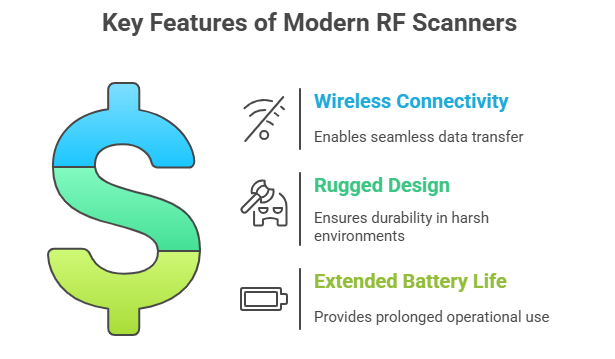
Wireless Connectivity
The most distinctive feature of any rf scanner is that it works wireless. This is because this freedom of cables enables these workers to scan items anywhere within the area of the wireless network of the facility.
Real-Time Data Synchronization is yet another feature that can be implemented in this application.
All scans are instantly sent and updated within your system. This live feature will make sure that the inventory is kept current and at the right counts at all times.
Rugged Design
Majority of the these devices are designed to resist falls, dust, water, and temperature variations. This is a durable material that gives consistent service in the harsh industrial conditions.
Extended Battery Life
Contemporary scanners will have a continuous operation of 8-12 hours meaning they will not need replacing during a shift.
The advantages of Barcode Technology Integration are as follows.
Minimization of error and error reduction require accuracy.
Most notable advantages of using barcodes systems are in terms of accuracy improvements. The error rate of manual data entry is 1 in 300 keystrokes and it is 1 in 3 million scans in barcode scanning. Such dramatic increase negates expensive inventory control, shipping and receiving errors.
Speed and Efficiency
Speed is another important attribute of the technology of the benefits of barcode. Employees are able to scan products within seconds instead of minutes to manually input the data. This speed is directly converted into more productivity and quicker order completion.
Cost Savings
The advantages of the introduction of barcode implementation are spread to large cost savings. Reduced labor cost because it won’t take as much time to enter data. Better precision minimizes losses due to shipping errors, stock variances and misplaced inventory.
Improved Visibility of Inventory.
Live monitoring of a stock level, location, and patterns of movement can be done using an rf scanner. This openness allows making more effective decisions and plans.
There are numerous benefits of Barcode Systems to Business Operations.
Streamlined Workflows
The benefits of using barcode systems are the processes made extremely easier. Since the shipments arrive and the orders have to be picked, all these processes are speeded up and made more efficient using barcodes.
Scalability
Scalability of barcode is one of the key benefits of the technology. In the case of a small-scale retailer or a large distribution center, barcode systems can expand with your business without the need to make changes to your infrastructure.
Enhanced Customer Service
The benefits of barcode integration are spread to the customer satisfaction. Happier customers, repeat business because faster order processing, fewer shipping errors and accurate stock information creates a nexus of happier customers.
The company is required to ensure that health care professionals adhere to the law and fulfill the necessary standards.<|human|>Compliance and Traceability The company must see that health care professionals comply with the law and meet the required standards.
An rf scanner system gives the documentation and traceability required to comply with industries with tight regulatory requirements. Each scan leaves an audit trail demonstrating regulatory compliance.
Industrial Uses.
Retail Operations
Price checks, inventory counts, and point-of-sale transactions are done through the use of the rf scanner technology by retailers. The mobility enables personnel to serve customers in the selling floor and real-time information shows on inventory.
Warehouse Management
These scanners allow the efficient activities of receiving, putaway, picking, and shipping in warehouses. Products do not have to be moved to a specific terminal before workers scan them, but they can do it at their point of location.
Manufacturing
The manufacturing plants use this equipment to track work-in-progress, quality and finished products. This is to maintain a smooth production flow as well as proper accounting of inventory.
Healthcare
RF scanners have found application in hospitals and pharmacies in the verification of medication administration, patient identification and supply chain management. These environments literally depend on the accuracy improvements as being life-saving.
Finding the appropriate RF Scanner.
Consider Your Environment
Rugged models of rf scanners that are able to endure falls and severe environments are required in industrial warehouses. In a retail setting, it may be more important to place emphasis on smooth designs that appear professional within the sales floor.
Perform Range Requirement Analysis.
Establish the distance of access points of your workers. The banquet-sized facilities require scanners that have a wide wireless access.
Assess Scanning Needs
Scanning technologies are different with various applications. There are some environments where long-range scanners are necessary and where others are better served by omnidirectional scanning possibilities.
Integration Requirements
Make sure that the selected rf scanner is not conflicting with your existing inventory management systems and software platforms.
The best practices in implementation are ensured.
Start with a Pilot Program
Pilot the use of test rf scanner technology at one department or location and then extend it to a wider scale at the company level. This enables you to spot problems and streamline processes at minor scale.
Train Your Team Thoroughly
Training is essential so that the employees know how to utilize scanners and to trouble-shoot problems that usually occur. This investment is dividend bearing in terms of adoption and productivity
Measure Performance Indicators.
Monitor the main key performance indicators such as scan accuracy, speed of transaction, and system uptime. These measures can assist in assessing ROI and finding areas to improve on.
Trends in RF Scanning Technology in the future.
The history of this technology is further advanced through innovations such as the inclusion of artificial intelligence, computer vision, and an extended range of connectivity features such as 5G connectivity.
The introduction of voice-directed scanning and augmented reality displays is a new example that will expand worker productivity and accuracy even further.
Conclusion
The rf scanner is now a necessity to contemporary companies that desire operational excellence. Since the foundation of the capability to define the capabilities of handheld scanners, to the overall benefits of barcode systems and the strategic benefits of barcode integration, this technology promises quantifiable gains in every measure that counts.
Companies that adopt the RF scanning technology stand in a position to be successful in a marketplace that is becoming more competitive. Accuracy, speed, and real-time visibility yield a platform of growth and it makes customers satisfied.
In case you are willing to revolutionize your operations with the state-of-the-art scanning solutions, Qodenext can also provide expert advice and implementation assistance that will guide you through the process of choosing and deploying the most appropriate RF scanner system to meet your specific needs. Efficient data collection in the future is wireless, mobile and more powerful than ever before.
Frequently Asked Questions(FAQ)
1. What is RF scanner and its functionality in a warehouse?
The definition, technology (with the help of radio frequencies) and the main usage of RF scanners in logistical contexts is all discussed in this question.
2. What is the distinction between handheld barcode scanner and handheld RF scanner?
This is in response to the difference between a simple portable scanner and that which employs radio frequency to communicate wirelessly and in real-time with a central system.
3. What are the primary advantages of a barcode system of inventory management?
This question attacks one of the fundamental strengths of barcodes, namely, to enhance the speed, accuracy and efficiency of tracking inventory.
4. What is the savings of barcode in human error and money saved by a business?
This narrows down to two of the greatest benefits of using barcodes, which are, reduction of manual data entry errors and less operational cost.
5. What industries are most useful in the use of barcode technology?
This question discusses the general uses of barcodes outside of retailing, such as in logistics, the health sector, and manufacturing.
6. Is it possible to scan barcodes with the help of my smartphone, and what are its strengths and weaknesses?
This covers the contemporary, mobile alternative to the dedicated handheld scanners, and speaks about the convenience, cost-effectiveness, and possible restrictions.
7. What are the various styles, or kinds of barcodes and RF scanners?
This question explores the different form factors and technologies which include hand held, wearable, fixed-mount scanners and the 1D and 2D barcodes.
8. What are the benefits of barcode scanning as a retailer?
This question includes the benefits associated with the reduction of a checkout time, appropriate prices, and effective order fulfillment.
9. How much can be recovered on investment (ROI) on a barcode system?
The financial justification of the adoption of barcode technology is the subject of this question, as it will be possible to define the number of saved labor and errors and efficiency.
10. What is the role of barcodes in terms of real-time data collection to make better business decisions?
This is in response to the capability of barcodes to deliver real time sales, stock and other indicators information, enabling managers to make more informed decisions.
